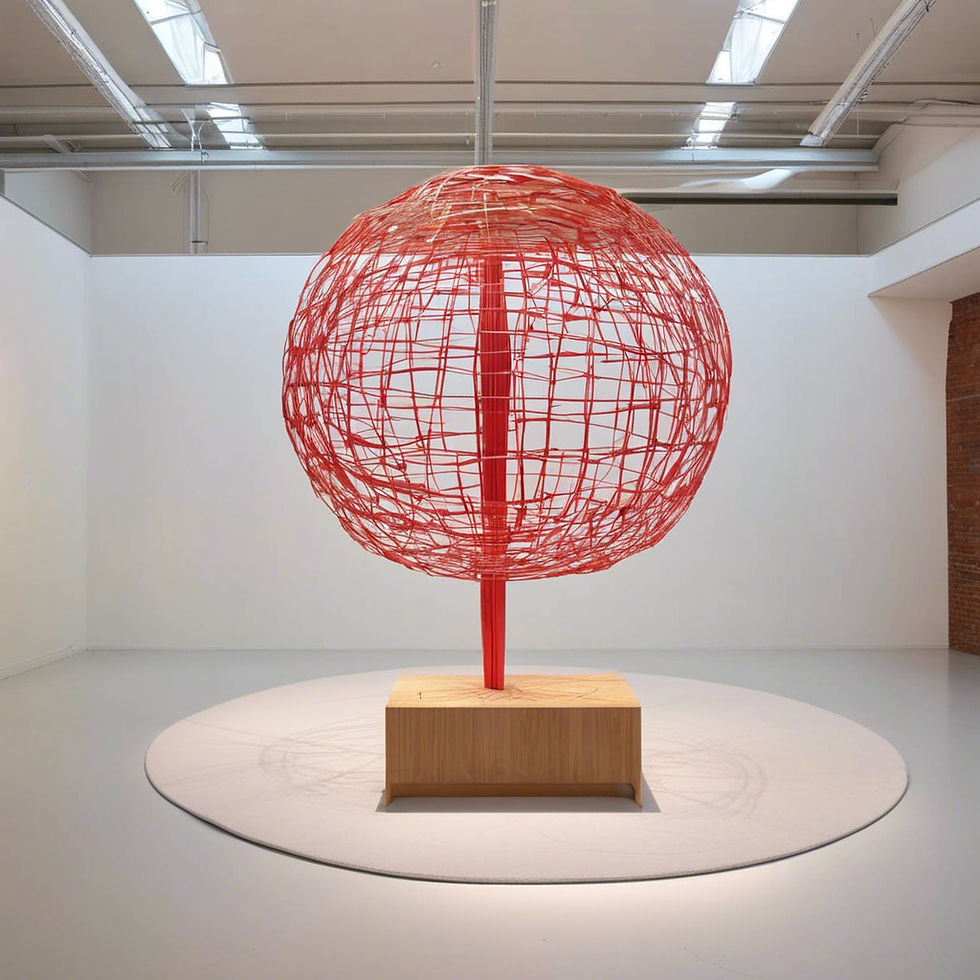Art Criticism: Navigating Interpretations of Contemporary Works
- Ahmed Kheder

- Jul 1, 2024
- 3 min read
Updated: Nov 5, 2024
Art criticism, the practice of analyzing, interpreting, and evaluating works of art, has evolved significantly alongside the art it examines. In the realm of contemporary art, where boundaries are frequently blurred and definitions are constantly challenged, art criticism plays a crucial role in shaping public understanding and appreciation. This article delves into the complexities of art criticism in the context of contemporary works, exploring its methodologies, challenges, and the dynamic relationship between artists, critics, and audiences.
Criticism of Contemporary Works
The Evolving Landscape of Contemporary Art
Contemporary art is marked by its diversity, both in terms of medium and thematic exploration. From traditional painting and sculpture to digital installations and performance art, contemporary works often defy conventional categorization. This multiplicity of forms reflects the pluralism of contemporary society and the myriad ways artists engage with issues such as identity, politics, technology, and the environment.
This diversity presents a unique challenge for art critics. Unlike earlier periods where artistic movements like Impressionism or Cubism provided a relatively cohesive framework for interpretation, contemporary art lacks a unifying style or ideology. Consequently, critics must employ a broad range of analytical tools and theoretical perspectives to engage with the wide array of artistic expressions.
Methodologies in Contemporary Art Criticism
Effective art criticism requires a balance of subjective interpretation and objective analysis. Critics draw on various methodologies to dissect and contextualize contemporary works:
Formal Analysis: This approach focuses on the visual elements of a work—such as composition, color, line, and texture—independent of context. It is a foundational tool that helps critics assess the aesthetic qualities and craftsmanship of an artwork.
Contextual Analysis: Contemporary art is often deeply embedded in specific cultural, historical, and political contexts. Understanding these contexts is essential for critics to grasp the full significance of a work. This analysis considers factors such as the artist’s background, the socio-political environment, and the intended audience.
Theoretical Frameworks: Critics frequently employ various art theories, such as feminism, post-colonialism, psychoanalysis, and semiotics, to interpret contemporary works. These frameworks provide deeper insights into the underlying meanings and implications of art.
Comparative Analysis: By comparing contemporary works with historical or contemporary counterparts, critics can highlight influences, contrasts, and evolutions within the art world. This method helps situate a work within a broader artistic discourse.
Challenges in Critiquing Contemporary Art
Navigating the interpretation of contemporary art is fraught with challenges:
Subjectivity vs. Objectivity: The highly subjective nature of art can make criticism contentious. Personal biases and preferences inevitably influence critics, yet they strive for a level of objectivity to provide balanced and credible evaluations.
Accessibility and Esotericism: Contemporary art can be highly conceptual, sometimes to the point of being esoteric. Critics play a crucial role in demystifying complex works for broader audiences, but this requires a delicate balance between accessibility and depth.
Market Influence: The commercial aspects of the art world, including galleries, auctions, and art fairs, can impact critical evaluations. Critics must navigate these influences to maintain integrity and independence in their assessments.
Evolving Media: The rise of digital media and the internet has transformed how art is produced, distributed, and critiqued. Online platforms democratize art criticism, allowing diverse voices to contribute, but also pose challenges in terms of quality control and the proliferation of unsubstantiated opinions.
The Dynamic Relationship between Artists, Critics, and Audiences
The interplay between artists, critics, and audiences is integral to the ecosystem of contemporary art:
Dialogue and Discourse: Critics facilitate a dialogue between artists and audiences, interpreting works and sparking discussions. This discourse can enhance public understanding and appreciation, fostering a more informed and engaged art community.
Shaping Perceptions: Critics influence public perceptions and the reception of contemporary works. Positive reviews can elevate an artist’s career, while critical scrutiny can provoke reevaluation and debate.
Reflecting and Shaping Trends: Through their analyses, critics reflect current trends and movements within contemporary art. Simultaneously, their writings can shape future directions by highlighting emerging artists and innovative practices.
Conclusion
Art criticism in the context of contemporary works is a complex and dynamic field. It requires a nuanced understanding of diverse artistic practices and the ability to navigate the intricate interplay of subjective and objective analysis. As contemporary art continues to evolve, so too must the methods and approaches of art critics, ensuring they remain relevant and insightful interpreters of the ever-changing artistic landscape. Through rigorous analysis and thoughtful interpretation, art critics play an essential role in enriching the cultural dialogue and fostering a deeper appreciation of contemporary art.





Comments